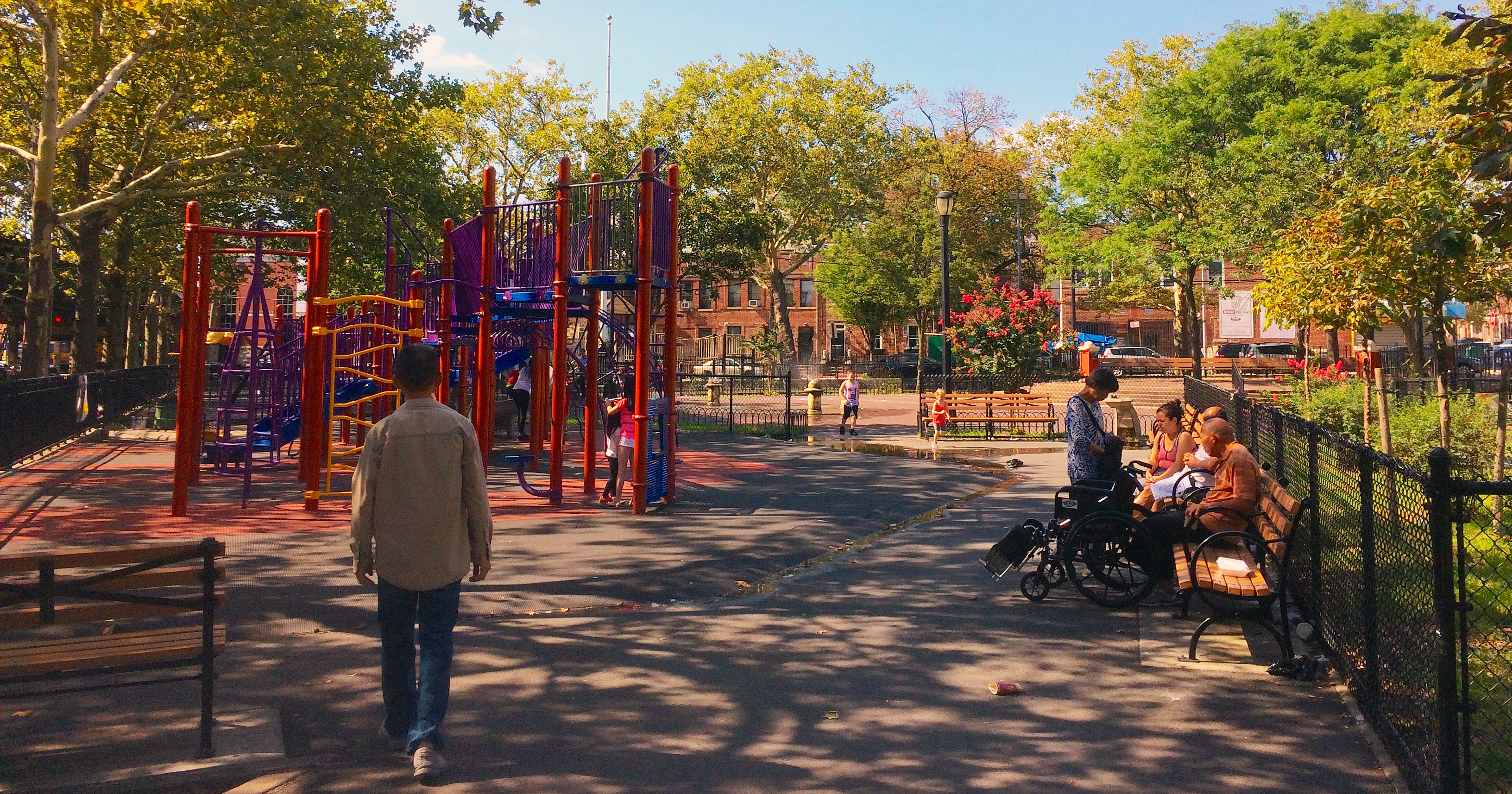NYC Park Study Compares Crime Reports, Kids’ Park Use

For Immediate Release
The more crime reported in the neighborhood, the fewer elementary-age kids play in New York City parks – especially girls. That’s the finding of a recent study that compared park use with police reports made one week, one month and three months beforehand in low-income communities surrounding 20 public parks.
“Reports of violent crime at any of those time intervals were associated with fewer park visitors, but we found the strongest association was for crimes that took place three months prior to our park visits, not those within the past week,” says study co-author Aaron Hipp, associate professor of community health and sustainability in North Carolina State University’s College of Natural Resources. “It’s the opposite of what we might have expected to see.”
An increase in violent crimes over the previous three months was associated with 22% fewer children in parks. However, more property crime reports also were associated with fewer girls in parks.
“This could be an example of parents potentially reacting differently with daughters versus sons,” Hipp says. “We’re assuming that parents are less likely to let their daughters go to the park or take their daughters to the park with them than they are with boys.
“Seeing a gender bias in park use is significant because prior research shows us that girls seem to stop using parks after about age 10 or 12, whereas boys don’t.”
The study is part of a larger research project involving children’s park access and park use in communities of color in New York and North Carolina. Researchers at NC State, Columbia University and Drexel University collaborated on the research.
“We’re looking at what gets kids to parks and what keeps kids away from parks, because recreation can help improve public health and prevent childhood obesity,” Hipp explains. “We focused on children from ages 5 to 10 for this research because this is a period of time in their lives when kids can start to build a pattern of positive behaviors.”
For this study, in spring 2017 researchers systematically counted park users in four New York boroughs: the Bronx, Manhattan, Brooklyn and Queens. Each park was located in a low-income area. Those selected had at least two distinct areas for kids, such as a playground and a sports court or field.
Researchers logged participants’ age, gender and race during distinct time periods: 3 to 4 p.m., 4:30 to 5:30 p.m., and 6 to 7 p.m. In addition, they recorded kids’ activity levels as sedentary (not actively playing), moderately active (moving but not enough to raise kids’ heart rates) and vigorously active (exercising at levels that would raise heart rates).
Among the kids who used the parks, about 80 percent of those 5 to 10 years old took part in moderate to vigorous activity that could provide health benefits, says co-author Claudia Alberico, a doctoral student in NC State’s Department of Parks, Recreation and Tourism Management. However, recent crime (within one week) was associated with a decrease in girls’ physical activity.
After visiting each park on multiple days, researchers downloaded New York City Police Department crime data for each corresponding neighborhood, including crimes against both people and property.
Higher violent crime rates in the week prior to a park visit were associated with 7% fewer park users overall, both adults and children. While property crime reports within the past week were also associated with a drop in overall park visitors, it didn’t last.
“We didn’t find any statistical association, but in general we saw the number of adults at parks remain the same or even increase a little bit over the three month period following the reports of crime,” Alberico says. “One question that I’d like to explore is whether that’s because now adults feel like they have to come to the park with their children.”
A better understanding of what keeps children away from parks could help in finding solutions, Hipp says. “With public health challenges involving physical activity and childhood obesity, multiple groups can step in and help.” Some examples of partners are neighborhood associations, Boys and Girls Clubs, the city and parks departments, and other community organizations.
“For example, how about organizing community events after crimes in the park, so people can shake the fear of going to that park after a crime increase?” asks Oriol Marquet Sarda, lead author of the article and a postdoctoral scholar at NC State University. “Security in numbers could lead to a break in the fear factor.”
The article, “Short-term associations between objective crime, park-use, and park-based physical activity in low-income neighborhoods,” appears in Preventive Medicine.
The work was supported by the Robert Wood Johnson Foundation through the Physical Activity Research Center (PARC).
– ford –
- Categories:


